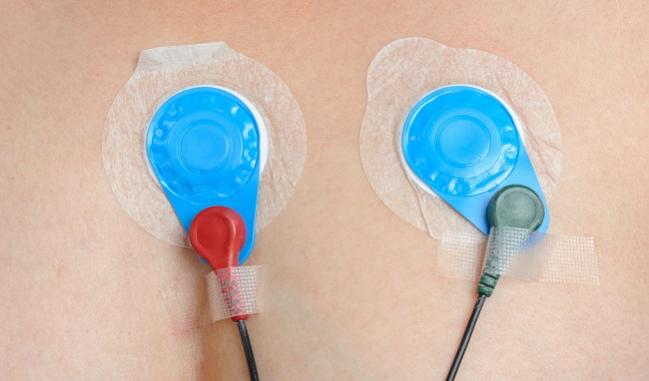More A-fib, No Drop in Stroke or Death With Surgical Left Atrial Appendage Exclusion

In a finding that may have implications for percutaneous left atrial appendage (LAA) occlusion devices, a single-center series suggests that removing or closing off the LAA during cardiac surgery for indications other than A-fib may not have a clinical benefit. In fact, early postoperative A-fib seems to be more frequent in patients who have the appendage excluded.
After propensity matching, A-fib was detected in the first 30 days following surgery in 68.6% of patients who underwent LAA exclusion and 31.9% in those who didn’t (P < 0.001), according to researchers led by Rowlens Melduni, MD, MPH (Mayo Clinic, Rochester, MN).
Over longer-term follow-up, there were no differences between the groups in terms of ischemic stroke or mortality, they report in a study published online November 30, 2016, ahead of print in Circulation.
“Future studies are needed to evaluate the long-term efficacy of LAA closure strategies in reducing the risk of stroke in patients with AF,” they write. “This study would suggest that a similar evaluation of all LAA occlusion techniques should be undertaken.”
Commenting on the study for TCTMD, Richard Whitlock, MD, PhD (McMaster University, Hamilton, Canada), agreed that there is a need for further research into whether LAA exclusion actually improves clinical outcomes, noting that other studies have yielded findings similar to the one by Melduni et al.
“In cardiovascular medicine, I would say that there has been—so far—overenthusiasm in terms of the evidence that’s currently available that supports that this procedure prevents stroke,” he said.
More definitive trials are needed, said Whitlock, who is the principal investigator of the ongoing LAAOS III trial evaluating surgical removal of the LAA in patients with A-fib who are undergoing cardiac surgery for another indication. Investigators have randomized about 2,600 out of a planned 4,700 patients thus far.
Although much attention has been paid to percutaneous closure of the LAA in patients with nonvalvular A-fib using devices like the Watchman (Boston Scientific), it is important to perform independent studies of LAA exclusion in patients undergoing cardiac surgery, who more frequently have valvular A-fib, Whitlock said.
“The answer is not in,” he said. “There’s a lot of people who have a very strong bias that removal of the left atrial appendage does prevent stroke, but what I think this paper highlights is that we shouldn’t be overly confident in that and that we do need to do large, definitive, and robust trials to demonstrate whether this benefits patients.”
No Stroke Benefit
Medluni and colleagues examined data on 9,792 patients who underwent CABG with or without concomitant valve surgery between 2000 and 2005 at the Mayo Clinic. They used propensity matching to identify 461 pairs of patients who did or did not undergo LAA exclusion at the time of surgery. Exclusion was done by ligation in about 98% of cases and by excision in the rest.
After matching, hospital length of stay was longer in those who had their LAA removed or closed off (median 7 vs 6 days; P = 0.046), but there were no differences in postoperative complications that included surgical re-exploration for bleeding, pneumonia, and acute renal failure.
However, LAA exclusion was independently associated with early postoperative A-fib (adjusted OR 3.88; 95% CI 2.89-5.20). Older age and a prior history of A-fib—seen in 46% of the matched cohorts—were the other risk factors.
During a median follow-up of 9.1 years, ischemic stroke occurred in 7.1% of patients and all-cause mortality in 43%. LAA exclusion was not related to risk of either outcome.
‘Challenges Current Enthusiasm’
The investigators note that some prior studies have also shown an increased rate of early postoperative A-fib following LAA exclusion, and together with the current study, “these findings suggest the presence of an atrial arrhythmogenic state in the immediate postoperative period following LAA closure in response to atrial distension, increased filling pressure, inflammation, [and] sympatho-vagal imbalance, favoring [postoperative A-fib].”
Whitlock said that that is an untested hypothesis and possible mechanisms linking LAA exclusion to postoperative A-fib remain unclear. Any potential benefits of the procedure have not been well established either, Whitlock added.
“It may turn out that it works well for nonvalvular atrial fibrillation, but there are some data out there that suggest that for patients with rheumatic heart disease or valvular atrial fibrillation there’s a high proportion of clots that form outside the left atrial appendage, so it is possible that it doesn’t work as well for valvular AF patients,” he said.
Whitlock urged restraint in performing LAA exclusion until more definitive studies like LAAOS III can be completed.
“Right now, based on the evidence, if a patient can have anticoagulation, that should be the focus of therapy for atrial fibrillation,” he said, adding that the current study “challenges current enthusiasm” for LAA exclusion and highlights the need to get patients into robust research studies.
Todd Neale is the Associate News Editor for TCTMD and a Senior Medical Journalist. He got his start in journalism at …
Read Full BioSources
Melduni RM, Schaff HV, Lee H-C, et al. Impact of left atrial appendage closure during cardiac surgery on the occurrence of early postoperative atrial fibrillation, stroke, and mortality: a propensity score matched analysis of 10,633 patients. Circulation. 2016;Epub ahead of print.
Disclosures
- Melduni reports no relevant conflicts of interest.
- Whitlock reports serving as the principal investigator of the LAAOS III trial and receiving consulting fees from AtriCure.


Comments